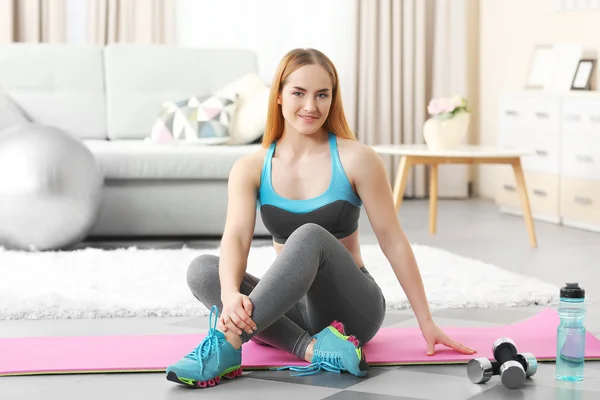When you sit on the floor, every movement you make – even reaching for that piece of pie – adds up to more moving minutes and decreases your sedentary seconds. Sitting on the floor also strengthens your body and promotes healthy bones, posture and core strength.
Getting up and down off the floor requires balance, stability and total-body coordination, which can help keep your musculoskeletal health.
Embrace sitting on the floor for improved flexibility and health. Learn why it’s beneficial and how to incorporate it into your daily routine for better well-being.
Strengthens Your Core
Although it may feel uncomfortable or unnatural at first, sitting on the floor will strengthen your core. It will also make it easier to keep a neutral spine and reduce back pain. Depending on the posture, sitting on the floor (such as squatting or sitting cross-legged) can even improve your flexibility.
Sitting on the floor forces you to keep a neutral spine, which helps reduce stress and pressure in your lower back and hips. It also encourages you to sit up straight, which helps prevent slouching. Sitting on the floor can also help you keep your weight centered over your hips instead of your feet, which can reduce foot and ankle pain.
Getting up and down off the floor regularly challenges your muscles and joints to maintain their strength and mobility. In fact, research has linked the ability to get up from the floor without using your hands, knees or a wall with longer lifespans.
Stretches Your Hips and Legs
Many of the same muscles that get worked out when squatting are also activated when sitting on the floor. This includes the front hip muscles, which are often in a shortened position when you spend long hours at your desk. When they stretch, they open the joint and improve movement capacity.
Start with the 90/90 pose (right knee on left thigh), or with a forward torso tilt, and add a supporting pillow or block beneath your front knee if it won’t lay flat to the floor. Don’t force the position if you have hip or knee problems.
Sitting on the floor for minutes at a time, several times per day, will strengthen and stretch your body. It may seem difficult at first, but the longer you sit without the support of a chair, the more your body will adapt. You’ll find the benefits of the position in your hip mobility, back posture and overall kinesthetic awareness.
Improves Your Posture
Sitting on the floor forces you to sit up straighter than if you’re in a chair, which can help with posture and flexibility. However, not all floor-sitting positions are created equal. Some may hurt if you’re already experiencing back pain or have mobility issues, so you should only attempt these positions if they don’t cause discomfort.
According to mobility gurus Juliet and Kelly Starrett, the type of surface you sit on matters. A cushion, yoga mat or a pillow can provide support and help prevent slouching. Additionally, leaning against a wall or sitting in a chair with a back rest can also provide stability.
Another consideration is how easy it is to rise from your seat. A study of the world’s longest-living populations found a correlation between how easily you can move from a seated to standing position and your longevity.
Sitting on the floor regularly increases your “movement minutes,” which can help maintain your strength, flexibility and function as you age.
Increases Your Mobility
Getting down and up off the floor requires a significant amount of strength and energy, strengthening the muscles in your back, legs, core and more. In fact, researchers have found a correlation between longevity and the ability to rise from the floor unaided.
While you may not be able to go from a chair to sitting cross-legged at work, taking frequent breaks and incorporating these postures into your daily routine can help you reap the benefits of floor-based movement and improve your mobility.
Sitting on the floor forces you to straighten your spine and push your shoulders back, which can help relieve the pain associated with rounded shoulder positions.
Additionally, squatting and sitting on the floor with crossed legs can improve hip mobility, possibly reducing your risk for knee osteoarthritis. And, if you’re struggling to find the proper posture, try placing a bolster or rolled towel under your buttocks for support and comfort.
Sitting on the floor can be uncomfortable at first, but as you adjust to it, you’ll notice your back and posture improve with each session.
